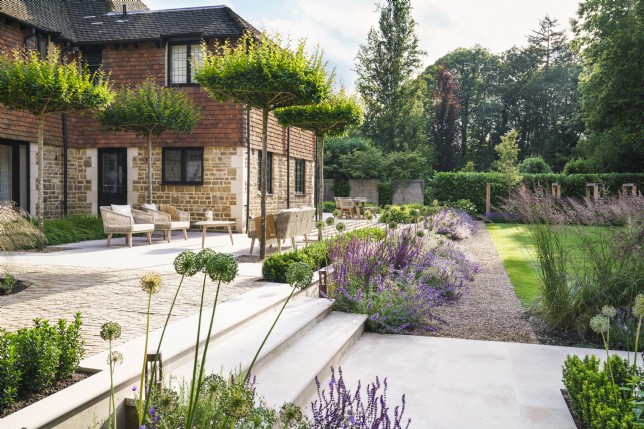Until relatively recently (for those who didn’t possess green thumbs at least) gardens were often seen as a bit of an afterthought when buying a house. A stretch of lawn for kids and pets, begrudgingly maintained but not overly enjoyed. Then along came Covid and our attention was forced away from travel and socialising and towards our homes and gardens; then the question of how we maximise and enjoy our outdoor space became infinitely more interesting.
So how do you make your garden an extension of your home? There are a few simple tricks to deploy which will turn your garden from the typical ‘lawn and flower beds’ into a room, (or rooms) of their own.

First up is the question I ask every new client: how do you want to use your garden? Do you want to eat, entertain, relax, cook, play, work, exercise, and dare I say, garden in it? This wish list will inform how you set out the space. The smaller the space, the stricter you need to be about use. It's better for a small courtyard to do one or two things well, rather than trying to cram everything in.
Next up, watch the sun. Notice where it falls in the morning, at lunchtime and in the afternoon. Would you rather sit in the sun or the shade when having a morning coffee, or a drink with friends? Once you know this, you can plan accordingly.
As for materiality, the very best advice I can give is to work with the house you have. Gardens need to feel like an extension of the home, not at odds with it, so look to the architecture of the house, your interior décor, and the surrounding landscape to inform your material palette and garden style. If you have limestone in your kitchen, for example, consider reflecting this outside. It doesn’t need to be identical, but match it in tone.

In older homes, I advise sticking to a palette of natural materials which fit the era: natural stones such as Limestones or Yorkstone, Cobbles, Brick and Timber to name a few. If you have a craving to inject something more contemporary into a space, do so by using clean lines in the design. Natural materials will keep the design tied to the house, but the layout will feel crisp and clean.
Then most crucially, don’t lose sight of the most essential element of the garden; the thing that makes a garden a garden: plants. Often seen as the afterthought but in fact, the big non-negotiable in any garden; give more space than you think over to plants. Plants are what lead the eye, offer seasonal interest, add softness and movement and even more importantly, support our pollinators and wildlife.

Plants mean maintenance, but clever choices can make all the difference. Plant deciduous ornamental grasses for months of interest and nothing more than an annual prune for maintenance. Plant trees for vertical interest, privacy and shade. Evergreen shrubs such as Pittosporum or Taxus baccata need little more than an annual or possible twice-yearly prune and add essential structure. Then for summer colour a couple of super easy well-behaved options, for full sun include Nepeta or Hardy Geraniums, both provide months of flowers for little more than a tidy-up in spring and the occasional deadhead if you want to extend flowering.
Words by Pollyanna Wilkinson, images © Rae Warne.
Discover our collection of secret garden escapes.







